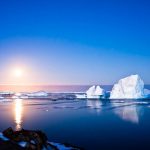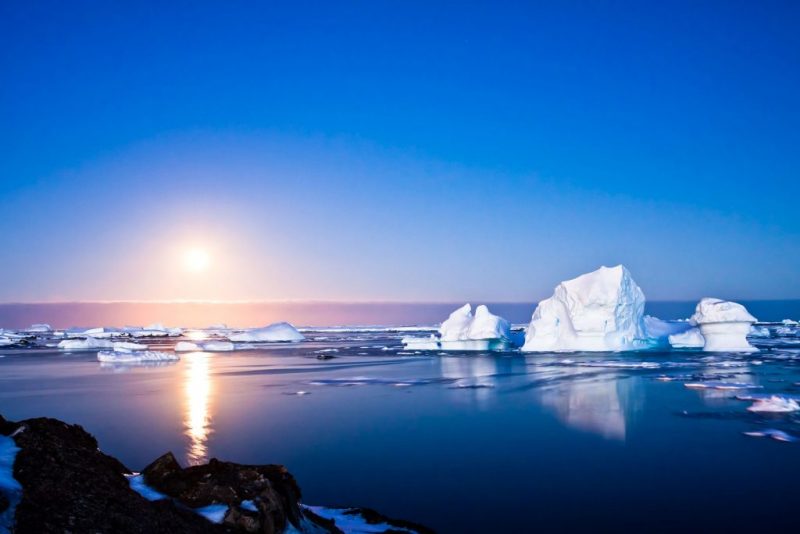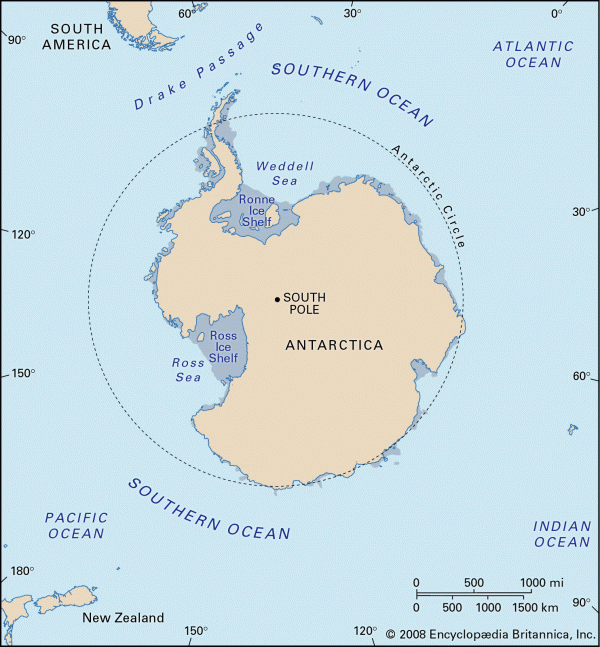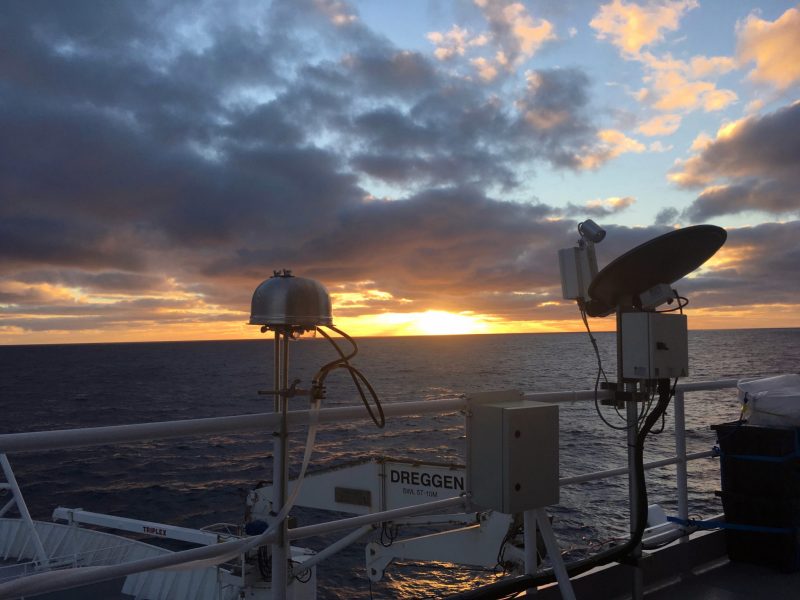

The Southern Ocean. Image via Spartan & the green egg
Researchers have identified Earth’s cleanest air – free of particles caused by our human activity – in a region in the Southern Ocean off the coast of Antartica.
Weather and climate are complex processes that connect each part of the world to every other region. A team of climate scientists from Colorado State University were curious to see just how far particles produced by human industry and activity reach. To find out, they sailed from Tasmania into the Southern Ocean – which encircles Antartica below 40 degrees south latitude – and measured the bioaerosol composition – the particles in the atmosphere – at several points.

Location of the Southern Ocean. Image via Brittanica.
They took measurements from the boundary layer, a part of the lower atmosphere that comes in direct contact with the ocean’s surface and reaches as high as 1.2 miles (1.9 km) into the atmosphere.
The study, published June 1, 2020, in Proceedings of the National Academy of Sciences, found the boundary layer air that feeds the lower clouds over the Southern Ocean to be pristine, free from particles, called aerosols, connected to human pollution or other activity or transported from distant lands.

Aerosol filter samplers probe the air over the Southern Ocean on the Australian Marine National Facility’s R/V Investigator. Image via Kathryn Moore/ Colorado State University.
The researchers said that it’s difficult to find any area or process on Earth untouched by people. The scientists suspected the air directly over the remote Southern Ocean that encircles Antarctica would be least affected by humans and dust from continents. They set out to discover what was in the air and where it came from. Colorado State University research scientist Thomas Hill is a study coauthor. Hill said in a statement:
We were able to use the bacteria in the air over the Southern Ocean as a diagnostic tool to infer key properties of the lower atmosphere. For example, that the aerosols controlling the properties of Southern Ocean clouds are strongly linked to ocean biological processes, and that Antarctica appears to be isolated from southward dispersal of microorganisms and nutrient deposition from southern continents. Overall, it suggests that the Southern Ocean is one of very few places on Earth that has been minimally affected by anthropogenic activities.
These results counter other studies from oceans in the subtropics and northern hemisphere, which found that most microbes came from upwind continents.
Bottom line: A new study suggests the cleanest air on Earth – free from pollution from human activities – is in a region of the Southern Ocean which surrounds Antarctica.
Source: Airborne bacteria confirm the pristine nature of the Southern Ocean boundary layer
from EarthSky https://ift.tt/3eU90Sg


The Southern Ocean. Image via Spartan & the green egg
Researchers have identified Earth’s cleanest air – free of particles caused by our human activity – in a region in the Southern Ocean off the coast of Antartica.
Weather and climate are complex processes that connect each part of the world to every other region. A team of climate scientists from Colorado State University were curious to see just how far particles produced by human industry and activity reach. To find out, they sailed from Tasmania into the Southern Ocean – which encircles Antartica below 40 degrees south latitude – and measured the bioaerosol composition – the particles in the atmosphere – at several points.

Location of the Southern Ocean. Image via Brittanica.
They took measurements from the boundary layer, a part of the lower atmosphere that comes in direct contact with the ocean’s surface and reaches as high as 1.2 miles (1.9 km) into the atmosphere.
The study, published June 1, 2020, in Proceedings of the National Academy of Sciences, found the boundary layer air that feeds the lower clouds over the Southern Ocean to be pristine, free from particles, called aerosols, connected to human pollution or other activity or transported from distant lands.

Aerosol filter samplers probe the air over the Southern Ocean on the Australian Marine National Facility’s R/V Investigator. Image via Kathryn Moore/ Colorado State University.
The researchers said that it’s difficult to find any area or process on Earth untouched by people. The scientists suspected the air directly over the remote Southern Ocean that encircles Antarctica would be least affected by humans and dust from continents. They set out to discover what was in the air and where it came from. Colorado State University research scientist Thomas Hill is a study coauthor. Hill said in a statement:
We were able to use the bacteria in the air over the Southern Ocean as a diagnostic tool to infer key properties of the lower atmosphere. For example, that the aerosols controlling the properties of Southern Ocean clouds are strongly linked to ocean biological processes, and that Antarctica appears to be isolated from southward dispersal of microorganisms and nutrient deposition from southern continents. Overall, it suggests that the Southern Ocean is one of very few places on Earth that has been minimally affected by anthropogenic activities.
These results counter other studies from oceans in the subtropics and northern hemisphere, which found that most microbes came from upwind continents.
Bottom line: A new study suggests the cleanest air on Earth – free from pollution from human activities – is in a region of the Southern Ocean which surrounds Antarctica.
Source: Airborne bacteria confirm the pristine nature of the Southern Ocean boundary layer
from EarthSky https://ift.tt/3eU90Sg

Aucun commentaire:
Enregistrer un commentaire